Echeveria Nodulosa (Painted Echeveria) Care Guide
Written by Iris
Nov 12 2021
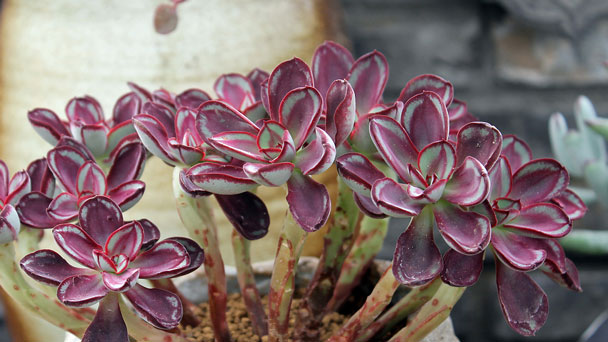
Very striking, Echeveria nodulosa (Painted Echeveria) is a charming evergreen succulent consisting of fleshy, pointed, concave, olive-green leaves decorated with bright red markings on the edges and middle leaves. In summer, a 2-foot spike appears above the rosette with pale yellow flowers with pink markings.
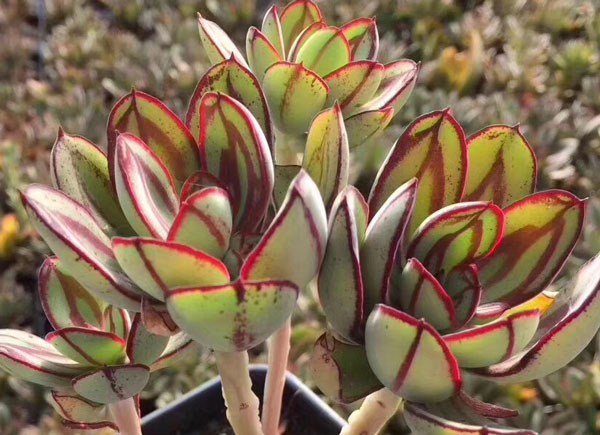
So to get started you will want to twist and pull away one or more offsets and set them aside for a few days to callus over.
The stronger the root formation already is the better.
Now prepare a container with some quality soil and once your offset has callused you can plant the roots directly into the soil with the offset sitting on top.
From here just water your Echeveria Nodulosa offset lightly or use a misting bottle whenever the soil has become dry and place the container in a spot where it gets plenty of indirect light.
After some weeks have passed, you will notice stronger roots have formed and you can ease into normal care.
Read More:
12 Popular Evergreen Plants with Pictures for Beginners
Once you have chosen your stem you can take a sharp clean knife or quality garden shears to cut the stem away while keeping a few leaves towards the top of the stem and none towards the bottom.
Let the stem cutting dry and callus over for a few days.
Once the stem is dry you can plant the stem 2 inches into it's own high quality soil while making sure there are no leaves touching or under the soil.
Now place the container in indirect light and water lightly whenever the soil becomes dry.
Eventually roots will form under the soil and you can ease into normal care.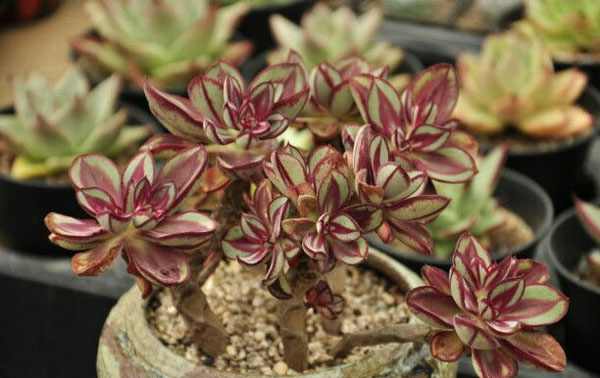
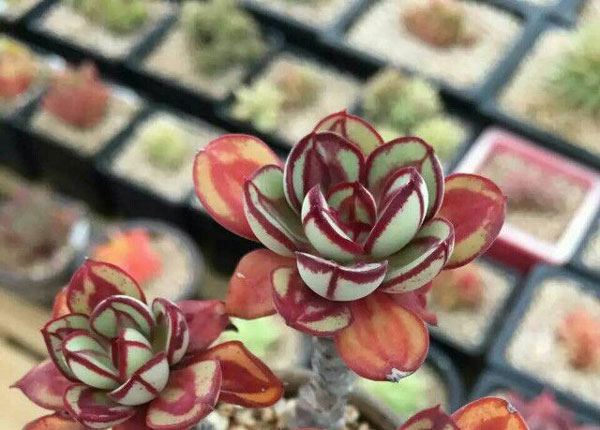
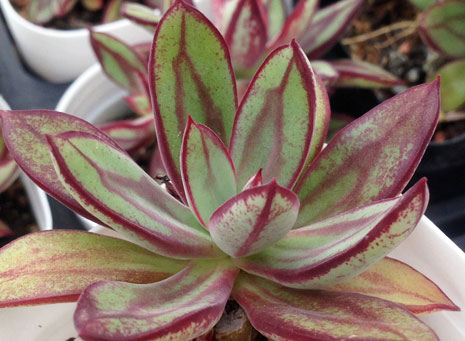
Mealybugs
Spider Mites
Aphids
Fungus Gnats
Mealybugs are one of the biggest threats to this type of succulent plant as they can quickly infest plants by sucking out all their sap.
Spider Mites also pose a significant threat because they feed on Echeveria Nodulosa’s leaves. They also spread various viruses, such as Red Spider Mite Virus (RPMV), which will cause spots or patches to appear on your plant, turning them brown.
Aphids suck up nutrients from young shoots, causing them to be stunted in growth. They also transmit the lace bugs, which can cause deformation on your plant.
Fungus Gnats are another pest you will want to watch out for because they lay their eggs in moist soil, and then when they hatch, these larvae start feeding on roots of plants, causing them to wilt or die.
If any of those pests above has invaded your Echeveria Nodulosa succulent plant, it is best to kill all egg masses, pupae, or even larva if possible using a strong jet stream from a water hose.You should also isolate infected plants away from other healthy ones and spray your plant down with insecticidal soap.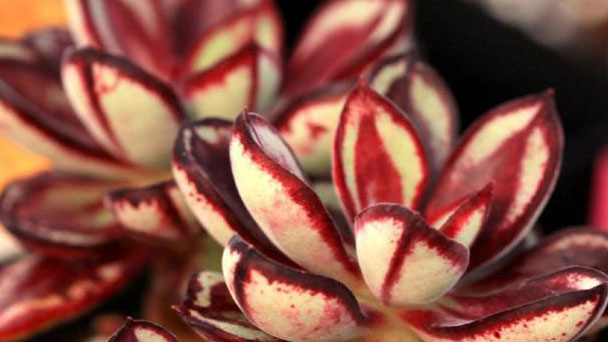
Read Next:
Echeveria Elegans Mexican Snowballs Care & Growing Guide
Echeveria Laui (Echeveria Succulent) Care Guide
Echeveria Agavoides Care & Propagation
Echeveria Pulvinata (Chenille Plant) Care & Propagation Guide
Echeveria Imbricata (Blue Rose Echeveria) Grow & Care Guide
Echeveria Setosa: Grow & Care for Mexican Firecracker
Echeveria Black Prince Succulent Grow & Care Guide
Echeveria Runyonii Topsy Turvy Grow & Care Guide
Echeveria Takasago No Okina Care Guide
Echeveria Mebina Care Guide
Where to Grow Echeveria NodulosaHow to Grow Echeveria Nodulosa (Painted Echeveria)Echeveria Nodulosa Propagation with OffsetsEcheveria Nodulosa Propagation with Stem CuttingsEcheveria Nodulosa Propagation with LeavesHow to Care for Echeveria Nodulosa (Painted Echeveria)Echeveria Nodulosa Light RequirementEcheveria Nodulosa Soil CareEcheveria Nodulosa WateringEcheveria Nodulosa Temperature & Humidity CareEcheveria Nodulosa Fertilizer CareEcheveria Nodulosa Pruning CareEcheveria Nodulosa Pests & Diseases CareVarieties of Echeveria NodulosaEcheveria Nodulosa Care FAQIs Echeveria Nodulosa pet safe?How fast does Echeveria Nodulosa grow?
Where to Grow Echeveria Nodulosa
Echeveria Nodulosa (Painted Echeveria) succulents need strong light. When planting echeveria nodulosa type in a garden, make sure it gets sunlight. Full to partial sun is the best for its growth. It is better to grow outdoor rather than indoor. Echeveria nodulosa prefers a warm climate. It can survive at zone 9b-11b which is around -3.9°C (25°F). If you live in a cold area, it is better to plant painted echeveria in an indoor environment. As long as it gets enough sunlight, the plant will grow happily.
How to Grow Echeveria Nodulosa (Painted Echeveria)
Echeveria Nodulosa Propagation with Offsets
If you have followed the steps listed above then chances are you will have a healthy echeveria Nodulosa that has produced a ton of offsets around the base of the succulent.So to get started you will want to twist and pull away one or more offsets and set them aside for a few days to callus over.
The stronger the root formation already is the better.
Now prepare a container with some quality soil and once your offset has callused you can plant the roots directly into the soil with the offset sitting on top.
From here just water your Echeveria Nodulosa offset lightly or use a misting bottle whenever the soil has become dry and place the container in a spot where it gets plenty of indirect light.
After some weeks have passed, you will notice stronger roots have formed and you can ease into normal care.
Read More:
12 Popular Evergreen Plants with Pictures for Beginners
Echeveria Nodulosa Propagation with Stem Cuttings
When propagating Echeveria Nodulosa from stem cuttings, you first want to find a healthy stem to use.Once you have chosen your stem you can take a sharp clean knife or quality garden shears to cut the stem away while keeping a few leaves towards the top of the stem and none towards the bottom.
Let the stem cutting dry and callus over for a few days.
Once the stem is dry you can plant the stem 2 inches into it's own high quality soil while making sure there are no leaves touching or under the soil.
Now place the container in indirect light and water lightly whenever the soil becomes dry.
Eventually roots will form under the soil and you can ease into normal care.
Echeveria Nodulosa Propagation with Leaves
When propagating Painted Echeveria with leaves, you should get a leave carefully from the mother plant. Cut a leaf from the mother plant carefully with a clean knife or scissors. It should be a healthy leave that has no part left on the stem. In this way, the propagation will work. Before replanting, wait for a few days to allow it to callous. Use well-draining soil for your new succulent plant. Don’t forget to water when the soil dries out.
How to Care for Echeveria Nodulosa (Painted Echeveria)
Echeveria Nodulosa Light Requirement
Echeveria Nodulosa thrives with a combination of full sun and partial shade. Painted Echeveria needs a moderate amount of sunlight. It should get at least a few hours of sun during the early morning or early afternoon. Echeveria Nodulosa prefers a location with some shade during the hottest part of the day. Placing it in an area that gets full sun for most of the day will cause scorching on its leaves and bleach out its color. Echeveria Nodulosa prefers indirect bright light such as found near windows or beneath trees during dry weather conditions. These plants do not like to be left in direct sunlight too long because they are prone to sunburns from high temperatures if exposed without adequate protection. Echeveria Nodulosa will thrive when placed in areas exposed to bright sunlight intermittently, so make sure to give them some time away from their window perches every now and again if they’re too close!Echeveria Nodulosa Soil Care
Like most succulents, they need great drainage and infrequent water to prevent rot. Pick containers with drainage holes and use well-draining cactus and succulent soil with 50% to 70% mineral grit such as coarse sand, pumice, or perlite. Water deeply enough for water to run out the drainage hole, then wait for the soil to fully dry before watering again.Echeveria Nodulosa Watering
Echeveria Nodulosa (Painted Echeveria) can be quite beautiful when it is well-taken care off. Echeveria Nodulosa type needs typical watering as the other succulents. The watering method is very important to keep your Painted Echeveria healthy. It should not sit on the water, and an excess amount of water should be avoided. The best way of watering is soak and dry method Echeveria Nodulosa. Yet, the succulent should be controlled to avoid overwatering.
Echeveria Nodulosa Temperature & Humidity Care
Echeveria Nodulosa needs a temperature of around 65° to 72° degrees Fahrenheit. If the temperature is too cold, it will not grow. If the Echeveria Nodulosa plant starts to show signs of frost damage or if your nighttime temperatures drop below 50°F, you should consider moving them inside for the winter months. Echeveria Nodulosa likes humidity of approximately 50%. If it falls below that level, you may need to mist your Echeveria Nodulosa plant daily. With good drainage and potting mix with plenty of air circulation, the Echeveria Nodulosa leaves will resist rot from developing on them.Echeveria Nodulosa Fertilizer Care
Echeveria plants are not heavy feeders and can easily be fertilized with a balanced diluted liquid fertilizer, applied every other week. The diluted liquid can be mixed in a container or directly into the soil at a rate of one teaspoon per quart of water. The most important thing to remember about fertilizing any succulent plant is that it should not be overfed. Painted Echeveria should be watered after feeding, and this will help wash off any surplus that may have been applied.
Echeveria Nodulosa Pruning Care
Echeveria Nodulosa (Painted Echeveria) requires regular pruning each year or two, as new growth is usually more attractive than old leaves. You don't want an Echeveria that looks "long legs." Trimming Echeveria Nodulosa means removing some of the oldest leaves and branches that may turn yellow or brown, Because newly added leaves and branches may be green. This process should also help prevent your Echeveria Nodulosa from becoming too top-heavy by cutting off older growth at the bottom of your Echeveria Nodulosa plants. It's best to prune away dead and dying parts before they spread disease or rot into the rest of the plant. If there are no damaged leaves on your Echeveria Nodulosa, use scissors for a clean cut, and use sharp scissors to cut off excess stems near its base. Make sure you're not cutting into healthy living tissue that can grow new buds. If your Echeveria Nodulosa leaves turn yellow, you can trim off the yellow areas.Echeveria Nodulosa Pests & Diseases Care
Echeveria Nodulosa succulent plant is vulnerable to some pests and diseases, including:Mealybugs
Spider Mites
Aphids
Fungus Gnats
Mealybugs are one of the biggest threats to this type of succulent plant as they can quickly infest plants by sucking out all their sap.
Spider Mites also pose a significant threat because they feed on Echeveria Nodulosa’s leaves. They also spread various viruses, such as Red Spider Mite Virus (RPMV), which will cause spots or patches to appear on your plant, turning them brown.
Aphids suck up nutrients from young shoots, causing them to be stunted in growth. They also transmit the lace bugs, which can cause deformation on your plant.
Fungus Gnats are another pest you will want to watch out for because they lay their eggs in moist soil, and then when they hatch, these larvae start feeding on roots of plants, causing them to wilt or die.
If any of those pests above has invaded your Echeveria Nodulosa succulent plant, it is best to kill all egg masses, pupae, or even larva if possible using a strong jet stream from a water hose.You should also isolate infected plants away from other healthy ones and spray your plant down with insecticidal soap.

Varieties of Echeveria Nodulosa
There are many popular Echeveria, both species, and hybrids. In nature, Echeveria succulents are native to Mexico, the United States, and South America. Some of the more beautiful Echeveria include the blue Echeveria (E. glauca and E. laui), firecracker plant (E. setosa), painted lady (E. derenbergii), and E. agavoides.Echeveria Nodulosa Care FAQ
Is Echeveria Nodulosa pet safe?
The Echeveria Nodulosa is not toxic to humans or animals. But despite this, the Echeveria Nodulosa sap may cause skin irritation in some individuals, so handle plants carefully. If you touch a plant, wash your hands thoroughly afterward before touching anything else (especially sensitive areas like eyes).How fast does Echeveria Nodulosa grow?
For example fastest growing succulents like Echeveria Nodulosa (Painted Echeveria) can grow up-to 6-8 inch in just a year from a 2 inch plant when slow growers like Haworthias can take to a year or even more To go from a 2 inch size to 5 inch.Read Next:
Echeveria Elegans Mexican Snowballs Care & Growing Guide
Echeveria Laui (Echeveria Succulent) Care Guide
Echeveria Agavoides Care & Propagation
Echeveria Pulvinata (Chenille Plant) Care & Propagation Guide
Echeveria Imbricata (Blue Rose Echeveria) Grow & Care Guide
Echeveria Setosa: Grow & Care for Mexican Firecracker
Echeveria Black Prince Succulent Grow & Care Guide
Echeveria Runyonii Topsy Turvy Grow & Care Guide
Echeveria Takasago No Okina Care Guide
Echeveria Mebina Care Guide
Latest Updated
- Benefits of Bugleweed - 7 Science-backed Health Benefits
- Bugleweed Dangers & Side Effects - Is It Poisonous?
- How to Plant Evergreen Trees - What You Should Know
- When to Plant Evergreens - Grow Guide for Evergreen Trees
- 12 Wonderful Evergreen Shrubs for Your Garden
- 12 Popular Evergreen Plants with Pictures for Beginners
- When And How To Prune A Lilac Bush Like a Pro
- How to Grow & Care for Lilac Vine (Hardenbergia Violacea)
- Japanese Lilac Tree (Syringa Reticulata) Care & Propagation Guide
- Shumard Oak Pros and Cons - What to Know
Popular Articles
- Winter maintenance of Antirrhinum Majus
- How to Grow Terminalia Mantaly Tree
- How to Grow and Care for Crossostephium Chinense
- How to grow Antirrhinum Majus in spring
- Peristeria Elata (Dove Orchid) Profile: Info & Care Guide
- Underwatered Snake Plant (Sansevieria Trifasciata) - Signs And How To Fix
- How to Care for Brazilian Jasmine Plant (Mandevilla Sanderi)
- How to Grow & Care for Graptopetalum Purple Delight in Summer
- Rosa Chinensis (China Rose): Plant Growing & Care Tips
- How to Care for Baby Sun Rose (Aptenia Cordifolia)